Common names: buzzard, common buzzard
Scientific name: Buteo buteo
Family: Accipitridae (hawks and eagles)
Habitat: woodland, upland, farmland
Diet: rodents, rabbits, birds and invertebrates
Predators: adults have no natural predators
Origin: native
High-flying comeback kids. Soaring buzzards are a common sight above our woodlands once more. These impressive birds of prey have quadrupled in number since 1970.
Common names: buzzard, common buzzard
Scientific name: Buteo buteo
Family: Accipitridae (hawks and eagles)
Habitat: woodland, upland, farmland
Diet: rodents, rabbits, birds and invertebrates
Predators: adults have no natural predators
Origin: native
Buzzards are large birds with broad rounded wings and a short tail. They are typically brown, often with a light necklace beneath the breast and white undersides to the wings. However, the species’ appearance is highly variable with some birds having far more white feathers than others. A buzzard’s beak is sharp and hooked and it has large feet with sharp talons. It has a wingspan of around 120cm and weighs up to 1kg.
Not to be confused with: the golden eagle, which is much larger and found only in parts of Scotland and Northern Ireland.
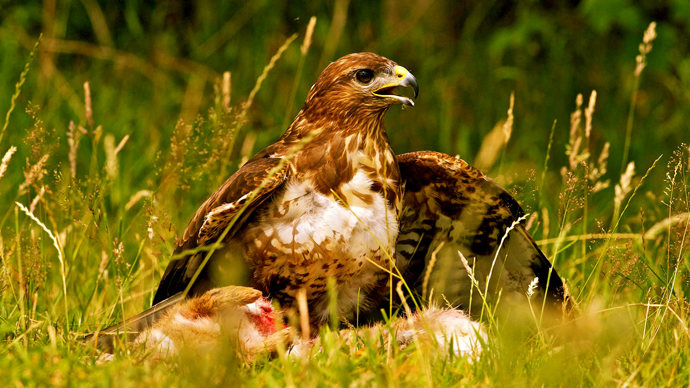
Credit: Tony Cox / WTML
Buzzards are opportunistic predators and can take a wide variety of prey. Small rodents such as voles and mice are commonly eaten, but they can also take prey as large as rabbits or as small as earthworms. They will also scavenge on road kill. This flexible diet allows the buzzard to survive in a variety of habitats.
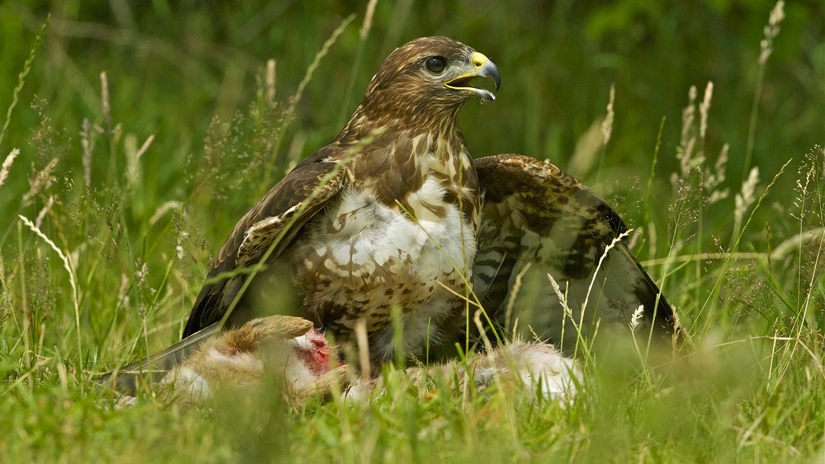
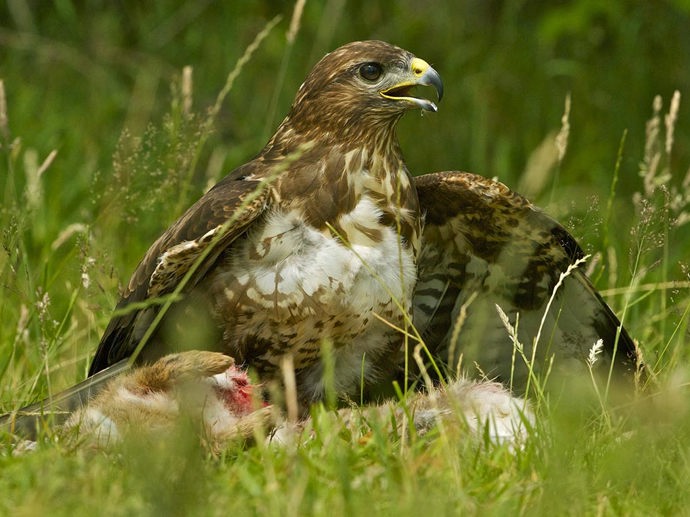
James Martin • 21 Jun 2019
Did you know the UK’s buzzard population had quadrupled since the 1970s? These majestic birds of prey are thriving, but what do they eat?
Buzzards prefer to roost and nest in woodland, but hunt in open areas.
Buzzards normally mate for life and a pair will fiercely defend their territory from any intruders. In early spring, male buzzards put on acrobatic aerial displays to impress females. Known as the ‘rollercoaster’, this sees the male fly upwards before plummeting down, twisting and turning as it descends.
Buzzards normally build a large nest in woodland. The nest will be mainly made of twigs and branches and lined with moss and other green material. Two to three eggs are laid, hatching after around 35 days. The young fledge after roughly two months, but may be fed by their parents for several more weeks.
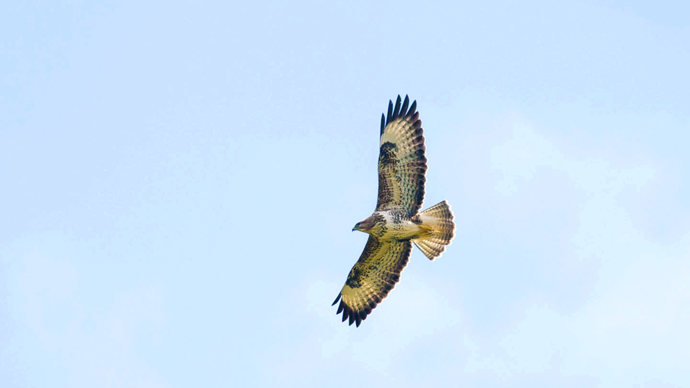
Credit: John Bridges / WTML
Buzzards can be found across the UK and can survive in most habitats, including woodland, farmland and moorland. They may even be seen in urban areas where there is sufficient green space.
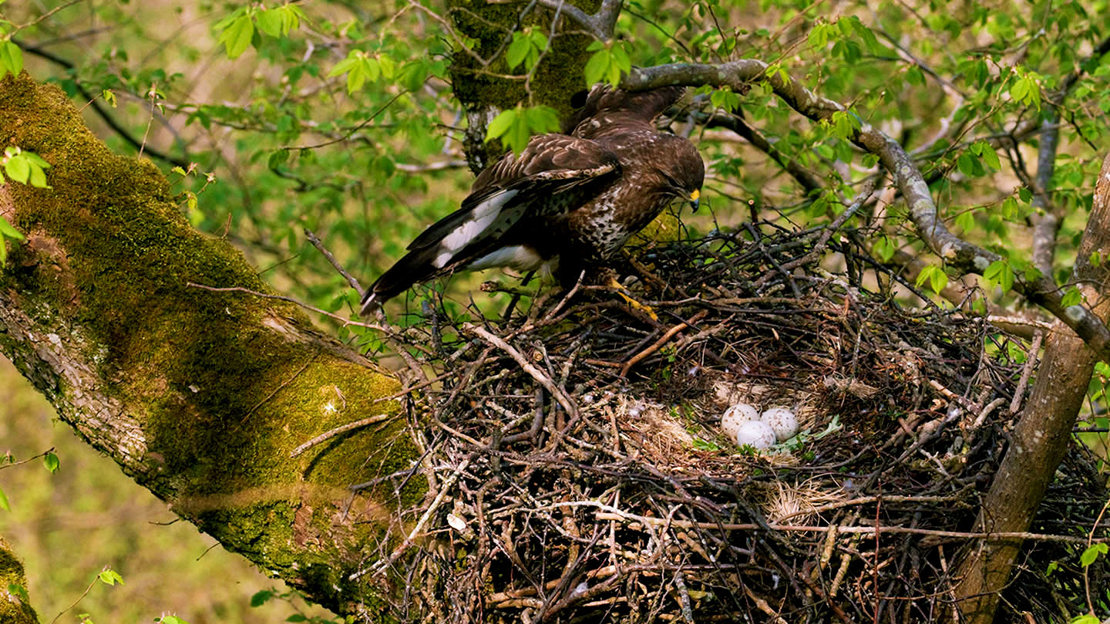
Buzzards are commonly ‘mobbed’ by crows and magpies which will harass the predator until it flies away.
Buzzards are relatively easy birds to see. Keep an eye on the skies, especially on warm, sunny days, and there’s a good chance you’ll notice the bird of prey soaring above in search of prey. If you’re lucky, you may get a closer view of a bird perched in a tree or on a fence post. You might even hear a buzzard before you see it; listen out for a high-pitched ‘kee-yaaa' call.
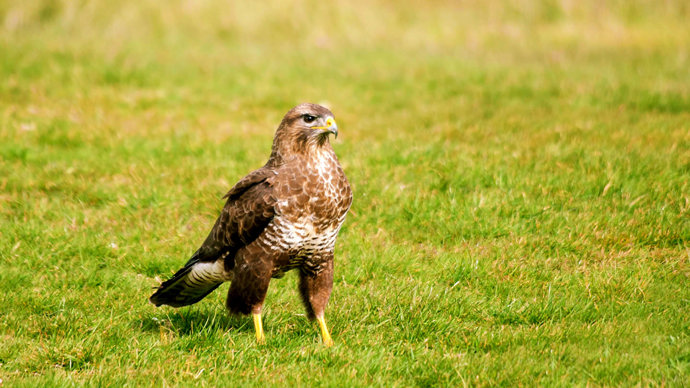
Credit: John Bridges / WTML
Buzzards are the UK’s most common bird of prey, but this was not always the case. Persecution by gamekeepers and the use of pesticide meant the species had disappeared from most of the country by the mid-20th century. Legal protection and a reduction in pesticides has allowed buzzards to recover. Numbers have more than quadrupled since 1970 and there may now be over 70,000 breeding pairs across the country.
In Scotland, the buzzard is sometimes called the ‘tourist eagle’ due to visitors mistaking it for the larger bird.
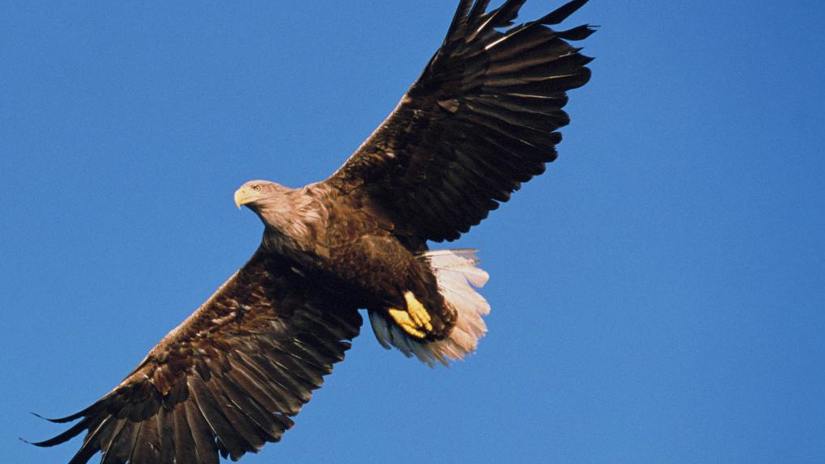
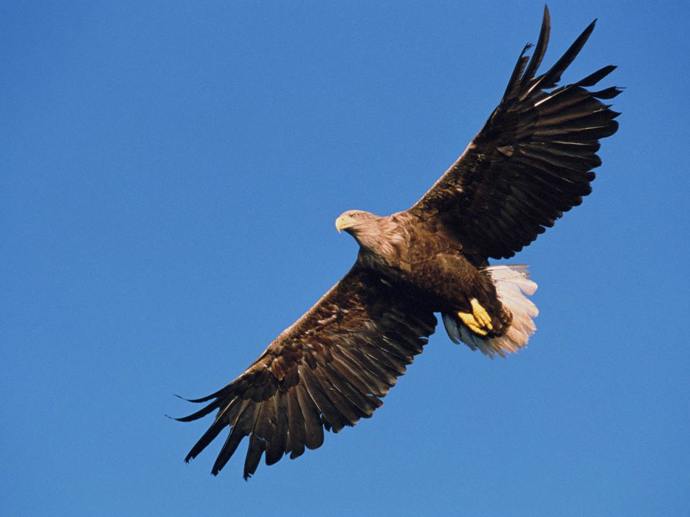
Amy Lewis • 10 Sept 2021
Learn how to identify the UK's birds of prey with our quick guide to their calls, key features and likely hangouts.